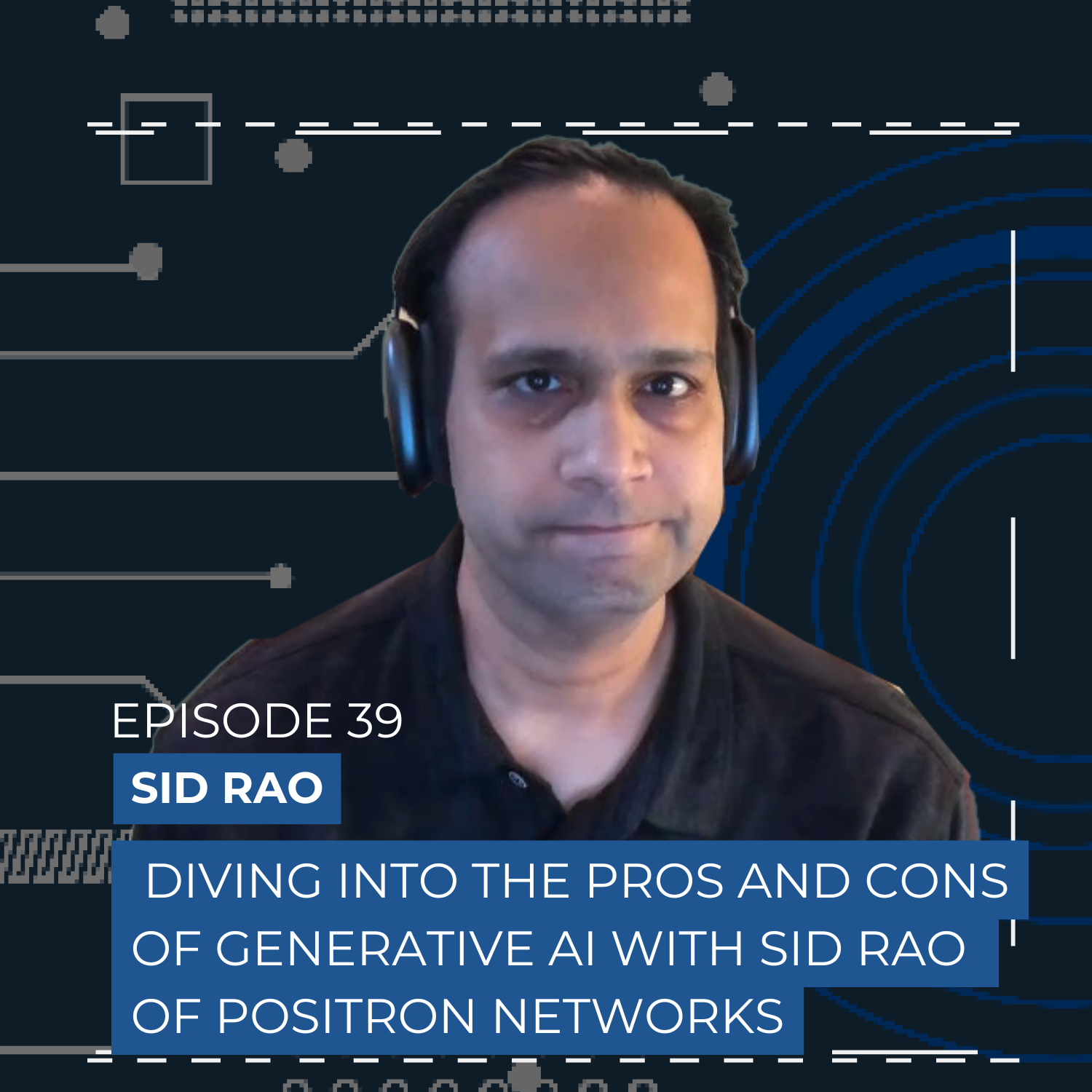
Generative AI has moved beyond being just a buzzword—it’s now the new business norm. But while it holds a big promise to businesses across different industries, the road to adoption is not without challenges. This week, we’re diving into the complexities of generative AI with our expert guest, Sid Rao.
Sid is the CEO and co-founder of Positron Networks, an AI startup revolutionizing scientific research through advanced AI/ML technologies. Sid’s extensive experience includes a leadership role at Amazon Web Services, where he was General Manager for the Amazon Chime SDK, and has led teams in developing latency-sensitive and high-performance distributed systems. He’s a well-respected and accomplished software development leader with in-depth experience building high-performing teams, driving strategic vision, and scaling businesses to $MM+ and beyond.
In this episode, Sid joins Arin to explore the pros and cons of generative AI. They discuss what engineering leaders need to consider when designing their applications and business models around this groundbreaking technology.
Tune into this episode to understand how generative AI can reshape your strategies and learn what you need to consider for a successful application!
About Guest:
Name: Sid Rao
What he does: Sid is the Co-founder and CEO of Positron Networks.
Company: Positron Networks
Where to find Sid: LinkedIn
Key Insights
⚡What is the role of generative AI in software development? While AI can handle routine tasks in software development, it cannot replace the deeper thinking and innovation required in tech. Sid explains, “A software developer, just like a scientist, is moving away from being an expert tactician, where they’re emitting code in the case of a software developer or in the case of the scientist, they’re having to do perhaps very cumbersome mathematics or calculations, and they can delegate that to the computer, but as to the ultimate understanding of the thought process or the business policy or that technical thought process that’s required for that innovation, they still have to do that on their own. They still have to have a fundamental understanding of the underlying topic.”
⚡Focus on strategic benefits when implementing AI. Instead of just focusing on how AI speeds up tasks, emphasize its real value, such as making high-judgment decisions and improving ROI. Sid explains, “I think it’s important to really carefully look at the ROI model that you’re applying for a generative AI as a software development leader, and don’t just apply generative AI because you think I can help a user do a task five times faster. Well, that business case is not necessarily a slam dunk like you think it is. If you’ve ever tried to sell a unified communications tool where the ROI is built around, you may remember this, ‘Look, this will save you $20 million a year in travel costs, and you’ll be able to do ten times the number of meetings’. […] Those business cases didn’t do nearly as well as just saying, ‘Your executives are always reachable, and they can always jump in to make a decision.’”
⚡AI is a productivity-enhancing tool. Gen AI works best in areas where it can significantly boost productivity and minimize repetitive labor. Sid says, “In those environments, I feel that generative AI is going to be most successful, where somebody’s productivity can be improved by an order of magnitude or two acts just by getting rid of repetitive tasks. […] When it’s a repetitive manual kind of productivity-killing tasks that still require some level of intelligence, I think generative AI is going to do a great job in that environment. Where it’s highly accurate, requires rational thought processes, I think until you see some of the work that’s being done around object graphs and knowledge graphs, get a little bit more advanced, generative AI is still out of reach of those industries right now.”

